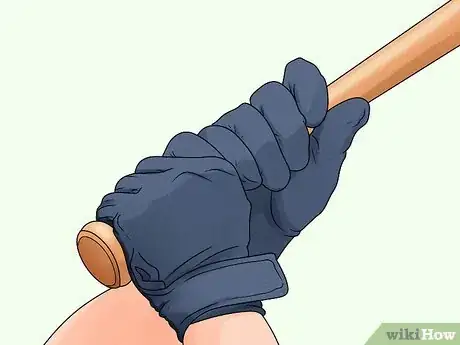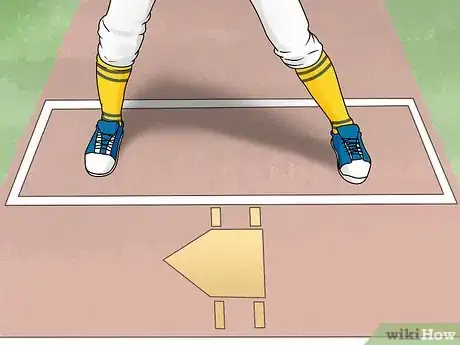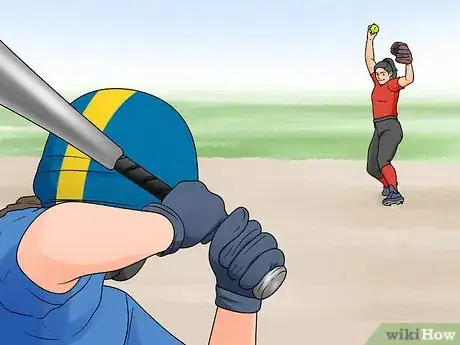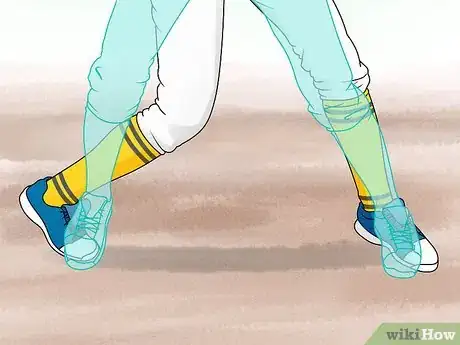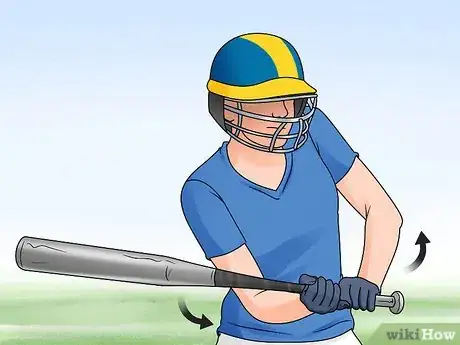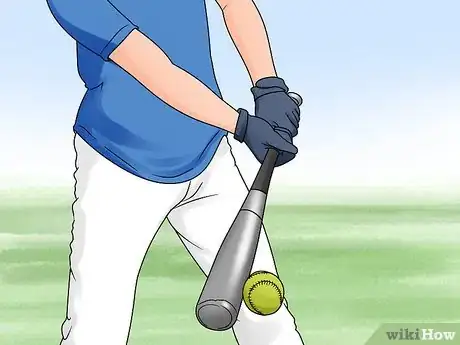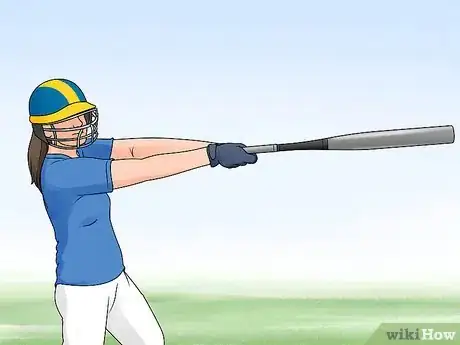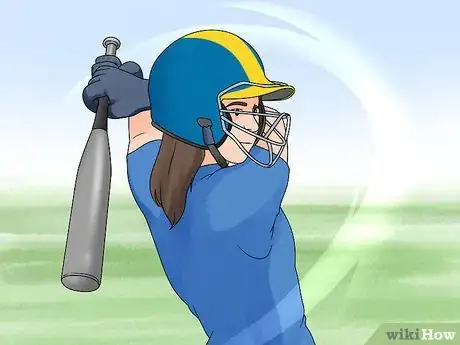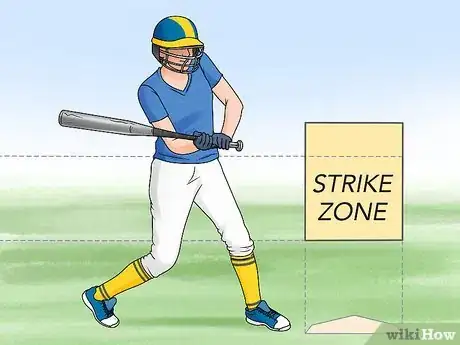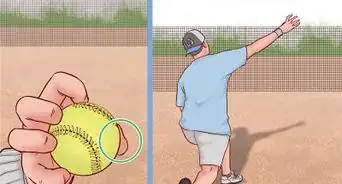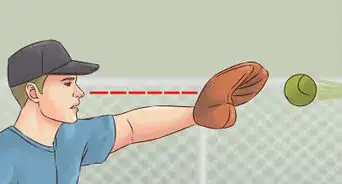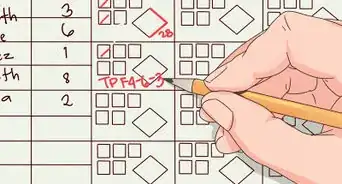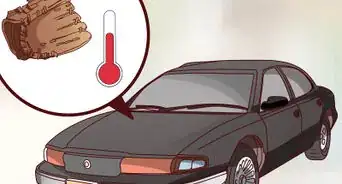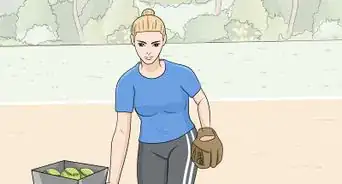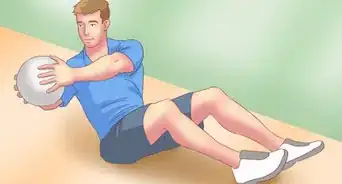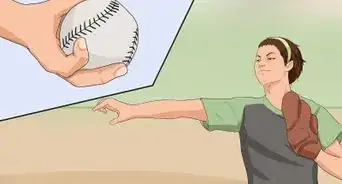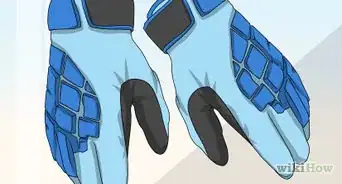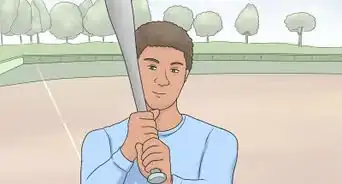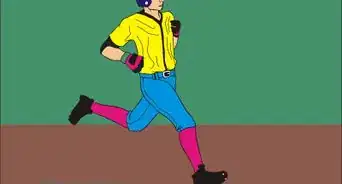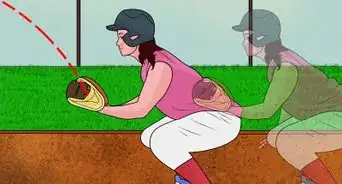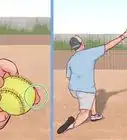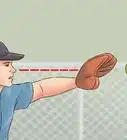This article was co-authored by Haley Snyder and by wikiHow staff writer, Hunter Rising. Haley Snyder is a former Division I Student-Athlete and Softball Player. With over a decade of experience, she specializes in softball mechanics, fundamentals, and pitching. Haley holds a BA and MA from Stanford University, where she competed in the PAC-12 Conference as a pitcher.
There are 17 references cited in this article, which can be found at the bottom of the page.
This article has been viewed 128,785 times.
If you want to get on base and score runs more often when you play softball, working on your batting skills can go a long way. Even though it may seem like you should just try to swing for the fences, there are a lot of little techniques that help you improve your fundamentals. We’ll walk you through the entire batting process so you can hit the ball with the most accuracy and power!
Steps
Expert Q&A
-
QuestionHow do you not strike out in softball?
 Haley SnyderHaley Snyder is a former Division I Student-Athlete and Softball Player. With over a decade of experience, she specializes in softball mechanics, fundamentals, and pitching. Haley holds a BA and MA from Stanford University, where she competed in the PAC-12 Conference as a pitcher.
Haley SnyderHaley Snyder is a former Division I Student-Athlete and Softball Player. With over a decade of experience, she specializes in softball mechanics, fundamentals, and pitching. Haley holds a BA and MA from Stanford University, where she competed in the PAC-12 Conference as a pitcher.
Softball Player Pay close attention while you're at bat. If the pitcher struck you out before with a certain pitch, expect that same pitch going forward.
Pay close attention while you're at bat. If the pitcher struck you out before with a certain pitch, expect that same pitch going forward. -
QuestionHow do you slap the ball in softball?
 Haley SnyderHaley Snyder is a former Division I Student-Athlete and Softball Player. With over a decade of experience, she specializes in softball mechanics, fundamentals, and pitching. Haley holds a BA and MA from Stanford University, where she competed in the PAC-12 Conference as a pitcher.
Haley SnyderHaley Snyder is a former Division I Student-Athlete and Softball Player. With over a decade of experience, she specializes in softball mechanics, fundamentals, and pitching. Haley holds a BA and MA from Stanford University, where she competed in the PAC-12 Conference as a pitcher.
Softball Player Keep a close eye on the other team's defensive positioning. If they've shifted to the left or right, there might be some gaps where you can drop the ball.
Keep a close eye on the other team's defensive positioning. If they've shifted to the left or right, there might be some gaps where you can drop the ball. -
QuestionWhen someone hits the ball in the air, do I freeze?
 DonaganTop AnswererIf the ball is popped up, remain near your base. If it's hit into the outfield and looks like it will be caught, go about half-way to the next base and wait to see if it's caught. If so, retreat to your base. If it's not caught, continue to the next base or beyond. If the ball is hit deep, return immediately to your base and tag up if you think you can make it safely to the next base. Your coach should be talking to you during this time to help you decide what to do.
DonaganTop AnswererIf the ball is popped up, remain near your base. If it's hit into the outfield and looks like it will be caught, go about half-way to the next base and wait to see if it's caught. If so, retreat to your base. If it's not caught, continue to the next base or beyond. If the ball is hit deep, return immediately to your base and tag up if you think you can make it safely to the next base. Your coach should be talking to you during this time to help you decide what to do.
References
- ↑ https://youtu.be/e4C2kLbkzZg?t=21
- ↑ https://youtu.be/pUa2OEo8HSI?t=159
- ↑ https://youtu.be/pUa2OEo8HSI?t=234
- ↑ https://youtu.be/e4C2kLbkzZg?t=87
- ↑ https://youtu.be/pUa2OEo8HSI?t=353
- ↑ Haley Snyder. Softball Player. Expert Interview. 23 June 2021.
- ↑ https://youtu.be/R2S_uh20nvc?t=110
- ↑ https://theswingconnection.com/how-to-swing-a-softball-bat-for-power/
- ↑ https://youtu.be/R2S_uh20nvc?t=225
- ↑ https://youtu.be/pUa2OEo8HSI?t=741
- ↑ https://youtu.be/iHE00hJcoJo?t=359
- ↑ https://youtu.be/iHE00hJcoJo?t=502
- ↑ https://youtu.be/R2S_uh20nvc?t=264
- ↑ https://youtu.be/R2S_uh20nvc?t=272
- ↑ Haley Snyder. Softball Player. Expert Interview. 23 June 2021.
- ↑ https://youtu.be/IfklEpsFF8w?t=83
- ↑ https://youtu.be/pUa2OEo8HSI?t=947
- ↑ https://youtu.be/bgl7bVpZq_o?t=141
